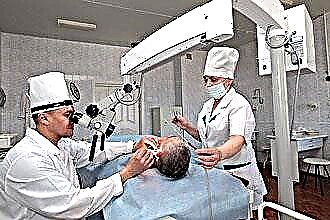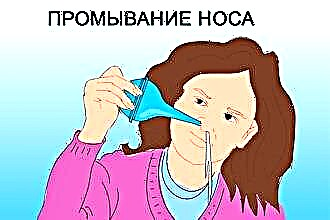 Treatment of tracheitis with folk remedies should be started as soon as the first signs of the disease are noticed:
Treatment of tracheitis with folk remedies should be started as soon as the first signs of the disease are noticed:
- sore throat;
- dry cough;
- malaise;
- subfebrile condition.
As the disease progresses, the cough begins to intensify, becomes painful, paroxysmal, often interferes with sleep and grows in the morning. Fever increases, reaches 38.5 degrees, chest pain appears, as a result of which a person tries not to take deep breaths, and his physical activity also decreases.
A coughing fit is triggered by cold air or screaming. The phlegm is difficult to cough up, so it accumulates, further increasing the soreness behind the breastbone. The voice may become hoarse.
The reason for the development of tracheitis can be:
- infection with bacteria or viruses;
- deep long inhalation of cold air, for example, when running or doing work outside in the winter;
- abuse of cold drinks;
- unfavorable living conditions (dry, polluted air);
- smoking;
- chronic infections in the respiratory system (tonsillitis, laryngitis);
- professional hazards (chemical, mining), when tracheitis often occurs against the background of chronic bronchitis;
- weakened immunity;
- allergic reaction;
- general hypothermia.
Pathological changes in the tracheal mucosa under the unfavorable influence of the listed factors lead to the appearance of infiltration, swelling and redness of the tissues. In the mucous membrane during tracheobronchoscopy, small hemorrhages and accumulations of thick sputum are noticeable.
If left untreated, tracheitis becomes chronic, which is also facilitated by smoking and occupational bronchitis. The course of the disease can be in two forms:
- hypertrophic, when a person has profuse sputum discharge when coughing. It is often yellowish in color, which indicates purulent inflammation and the presence of a bacterial infection. The mucous membrane is swollen on examination, thickened and dilated vessels are visible;
- atrophic, in which the mucous membrane becomes thin, smooth and with a grayish tint. Sometimes you can see dry crusts on the surface, irritating the mucous membrane, provoking a coughing fit. The sputum is usually scanty, or coughs up in small quantities.
In severe cases, with a strong cough, the risk of vascular damage and the appearance of streaks of blood in the sputum increases. The general condition also suffers, there is rapid fatigue, irritability and decreased appetite.
Where to start treatment
Remember, an acute form of the disease is much easier to treat than a chronic one, so you should not postpone treatment. Compliance with the general regimen is considered an important part of treatment. It includes:
- bed rest for 4-5 days; proper nutrition. Dishes that irritate the mucous membrane are limited, for example, peppery, salty;
- drink. Cold, carbonated and hot drinks are prohibited. Warm teas with honey, raspberries, ginger, currants, compotes, jelly or juice are recommended. The daily volume of fluid can be as high as 2–3 liters, excluding sweat loss in fever;
- voice peace. Of course, you should not be completely silent, but you need to protect your voice from shouting and loud conversations; lack of hypothermia;
- humidification of the air in the room. Also, don't forget about cleaning and airing.
Now let's take a closer look at the traditional methods of treating tracheitis. They are presented:
- decoctions, infusions for oral administration;
- warming procedures;
- inhalation.
Decoctions and infusions recipes
For the preparation of traditional medicines, one type of herbs or a combination of them can be used. Here are some recipes for which one ingredient is sufficient:
| Ingredient | Therapeutic action | Recipe |
|---|---|---|
| Nettle flowers | Anti-inflammatory, immunomodulatory, expectorant | 15 g of grass is poured with boiling water in a volume of 230 ml, infused for a quarter of an hour. Take 120 ml twice a day. |
| Elecampane | Antimicrobial, expectorant | 15 g of the ingredient must be poured with boiling water 220 ml, leave for an hour, filter and drink 100 ml three times a day |
| Liquorice root | Expectorant, bronchodilator | 5 g of the ingredient is poured with 220 ml boiling water, infused for 15 minutes. Drink 15 ml 5 times a day. |
| Plantain leaves | Expectorant, anti-inflammatory, antimicrobial | 5 g is poured with boiling water 220 ml, infused for a quarter of an hour. Take 15 ml 4 times a day |
| Marshmallow root | Anti-inflammatory, emollient, expectorant. Accelerates regeneration and envelops the mucous membrane, protecting against irritation and microbes | 0 g is infused for an hour in boiling water of 470 ml. After filtering, drink 100 ml three times a day |
| Thyme | Antimicrobial, expectorant | 15 g of the ingredient must be poured with boiling water 220 ml, leave for an hour, filter and drink 100 ml three times a day |
| Pine buds | Antiseptic, expectorant (reduces the viscosity of sputum), activates the regeneration of the tracheal mucosa | 50 g of kidneys must be boiled in 1.5 liters of water until a volume is half that of the original. Then it should be filtered, add 100 g of sugar. Take 100 ml three times |
| Cabbage, carrots | Anti-inflammatory, antiseptic, facilitates coughing | Cabbage or carrot juice (fresh) should be taken half an hour before meals three times a day, 100 ml |
| Garlic | Antiseptic | 5 garlic cloves must be chopped, boiled in 220 ml milk, cooled, filtered and taken 5 ml three times a day. |
There are many recipes that require multiple ingredients to prepare, for example:
- elderberry color, licorice root, pine buds and sage should be taken in equal amounts, mixed, pour boiling water (950 ml) and leave for half an hour. Then you should filter, drink 50 ml every 2 hours;
- in a container, you need to mix 5 g of sweet clover, 10 g of thyme, dill seeds, mint, 15 g of plantain, licorice root, 20 g of coltsfoot. After thoroughly mixing, you need to select 50 g of the collection, pour 700 ml of boiling water, leave for an hour and filter. Take warm, adding honey, 180 ml three times a day;
- in hot milk with a volume of 230 ml, add 15 g of honey, a small piece of butter. Then beat the yolk, add 1 g of baking soda and add to the milk. Drink in the evening before going to bed;
- another way is radish juice. To obtain the medicine, it is enough to cut a small depression in the radish and fill it with honey. After 5 hours, juice will appear, which you need to drink 10 ml three times a day;
- with allergic tracheitis, you can prepare an infusion of blackberries. To do this, pour 30 g of blackberry fruits and leaves with 450 ml boiling water, leave for an hour, filter and take instead of tea.
Given the risk of developing an allergy to herbs, you must make sure that you are not allergic before taking them. The same goes for beekeeping products.
Inhalation rules
Treatment with folk remedies can be carried out using inhalations, because their action is directed directly to the inflamed mucous membrane of the trachea, which is especially important in case of illness. First, consider the rules that must be followed in order to get the desired result from the procedure:
- steam temperature should not exceed 55 degrees;
- the procedure is prohibited in case of fever above 37.7 degrees;
- during the day it is recommended to alternate medicines for inhalation;
- inhale vapors through the mouth;
- after inhalation, do not smoke or go out into the cold;
- the procedure is carried out an hour after eating.
What inhalations can be done at home?
- an onion and a few garlic cloves must be chopped, wrapped in gauze and inhaled for 10-15 minutes;
- 40 g of wax, 60 g of propolis must be melted in a water bath and inhaled for 10 minutes;
- with an equal volume, you need to mix eucalyptus leaves, sage, chamomile, mint and pine buds, pour 240 ml of boiling water and put in a water bath for half an hour, then inhale the steam for 10 minutes;
- dried thyme can be wrapped in a gauze cloth or drop essential oil on a handkerchief, put near a warm radiator and inhale the aroma;
- 5 ml of calcium chloride can be added to 10 g of honey, heated in a water bath and inhaled;
- 4 drops of eucalyptus, pine, fir or tea tree oil can be added to hot water.
For the preparation of a decoction for inhalation, you can also use the leaves of eucalyptus, sage, elecampane root, licorice, marshmallow, sweet clover, thyme, linden, wild rosemary and coltsfoot.
Warming procedures
Warming procedures are a good addition to treatment, although they are not always indicated. They should be discarded in case of febrile hyperthermia and the presence of purulent inflammation in the airways. What are the folk remedies for the treatment of tracheitis in adults are used for warming:
 15 g of honey, dry mustard, flour and sunflower oil must be mixed, heated in a water bath, formed a cake, wrapped with gauze and made a compress;
15 g of honey, dry mustard, flour and sunflower oil must be mixed, heated in a water bath, formed a cake, wrapped with gauze and made a compress;- it is required to boil the potatoes "in their uniforms", crush them, add oil and form a layer, wrapping them with a gauze napkin;
- rubbing ("Doctor Mom", heated with a semi-alcohol solution);
- badger fat with the addition of fir essential oil is suitable for rubbing;
- foot baths with mustard (30 g per 2 liters of hot water);
- a spoonful of mustard can be poured into socks and kept warm under the covers;
- mustard plasters.
To make a compress, you need to apply the medicine to the front chest (upper region) or between the shoulder blades, cover with plastic and wrap with a warm cloth. Rubbing is carried out by applying the drug to these areas, followed by wrapping without polyethylene.
We emphasize that warming up is not carried out in the projection of the heart and spine.
Preventive actions
Is it really so difficult to take care of your health? After all, prevention does not imply adherence to impossible recommendations. To avoid inflammatory diseases of the respiratory system, it is enough:
- dress warmly. In winter, you need to wear a scarf, avoid getting your feet wet and freezing;
- do not stand in a draft and do not get caught in the rain in windy weather;
- take vitamins;
- eat right, drink enough fluids;
- quit smoking;
- go in for sports, or at least carry out morning exercises;
- regularly visit the dentist and ENT doctor for chronic infectious diseases (caries, tonsillitis, sinusitis);
- control physical activity.
The most important thing is peace of mind and healthy sleep. The sea climate, water procedures and dosed sunbathing are especially important for immunity.

 15 g of honey, dry mustard, flour and sunflower oil must be mixed, heated in a water bath, formed a cake, wrapped with gauze and made a compress;
15 g of honey, dry mustard, flour and sunflower oil must be mixed, heated in a water bath, formed a cake, wrapped with gauze and made a compress;

